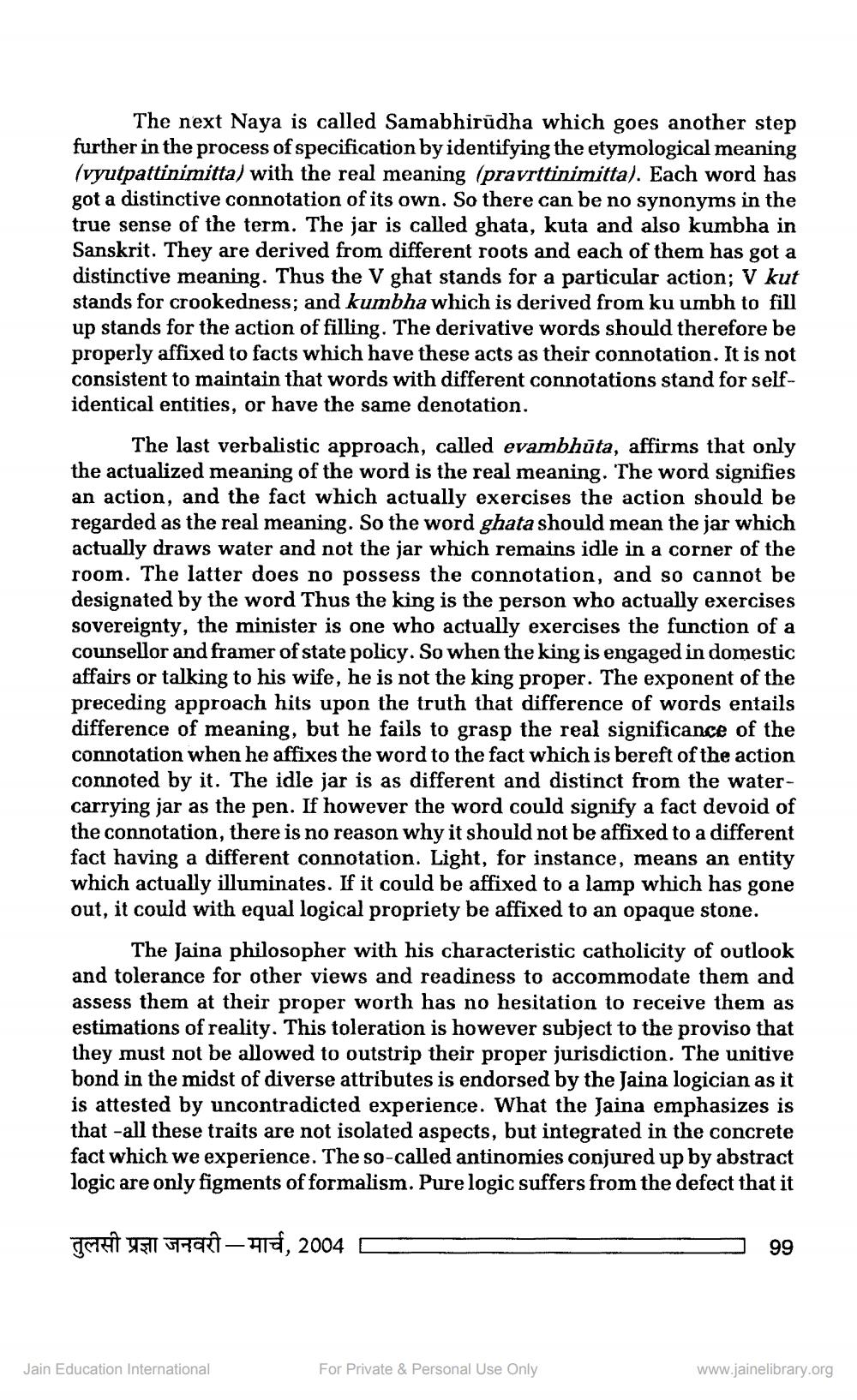________________
The next Naya is called Samabhirūdha which goes another step further in the process of specification by identifying the etymological meaning (vyutpattinimitta) with the real meaning (pravrttinimitta). Each word has got a distinctive connotation of its own. So there can be no synonyms in the true sense of the term. The jar is called ghata, kuta and also kumbha in Sanskrit. They are derived from different roots and each of them has got a distinctive meaning. Thus the V ghat stands for a particular action; V kut stands for crookedness; and kumbha which is derived from ku umbh to fill up stands for the action of filling. The derivative words should therefore be properly affixed to facts which have these acts as their connotation. It is not consistent to maintain that words with different connotations stand for selfidentical entities, or have the same denotation.
The last verbalistic approach, called evambhūta, affirms that only the actualized meaning of the word is the real meaning. The w an action, and the fact which actually exercises the action should be regarded as the real meaning. So the word ghata should mean the jar which actually draws water and not the jar which remains idle in a corner of the room. The latter does no possess the connotation, and so cannot be designated by the word Thus the king is the person who actually exercises sovereignty, the minister is one who actually exercises the function of a counsellor and framer of state policy. So when the king is engaged in domestic affairs or talking to his wife, he is not the king proper. The exponent of the preceding approach hits upon the truth that difference of words entails difference of meaning, but he fails to grasp the real significance of the connotation when he affixes the word to the fact which is bereft of the action connoted by it. The idle jar is as different and distinct from the watercarrying jar as the pen. If however the word could signify a fact devoid of the connotation, there is no reason why it should not be affixed to a different fact having a different connotation. Light, for instance, means an entity which actually illuminates. If it could be affixed to a lamp which has gone out, it could with equal logical propriety be affixed to an opaque stone.
The Jaina philosopher with his characteristic catholicity of outlook and tolerance for other views and readiness to accommodate them and assess them at their proper worth has no hesitation to receive them as estimations of reality. This toleration is however subject to the proviso that they must not be allowed to outstrip their proper jurisdiction. The unitive bond in the midst of diverse attributes is endorsed by the Jaina logician as it is attested by uncontradicted experience. What the Jaina emphasizes is that -all these traits are not isolated aspects, but integrated in the concrete fact which we experience. The so-called antinomies conjured up logic are only figments of formalism. Pure logic suffers from the defect that it
go
UFUGAQI – HEE, 2004 D
99
Jain Education International
For Private & Personal Use Only
www.jainelibrary.org




